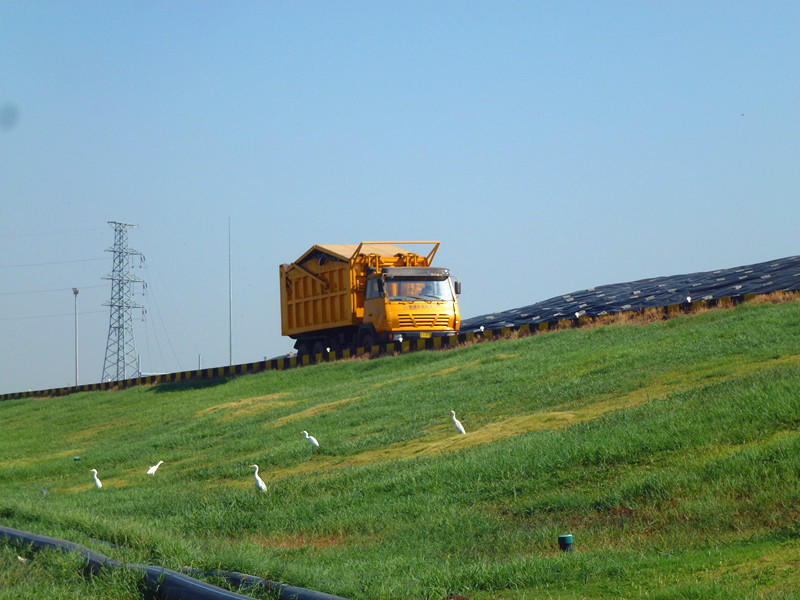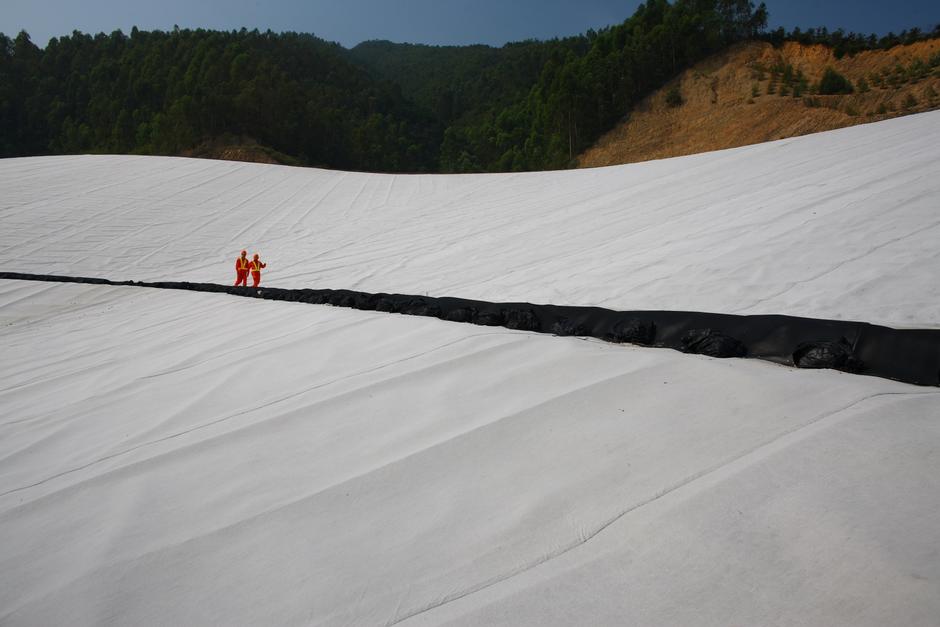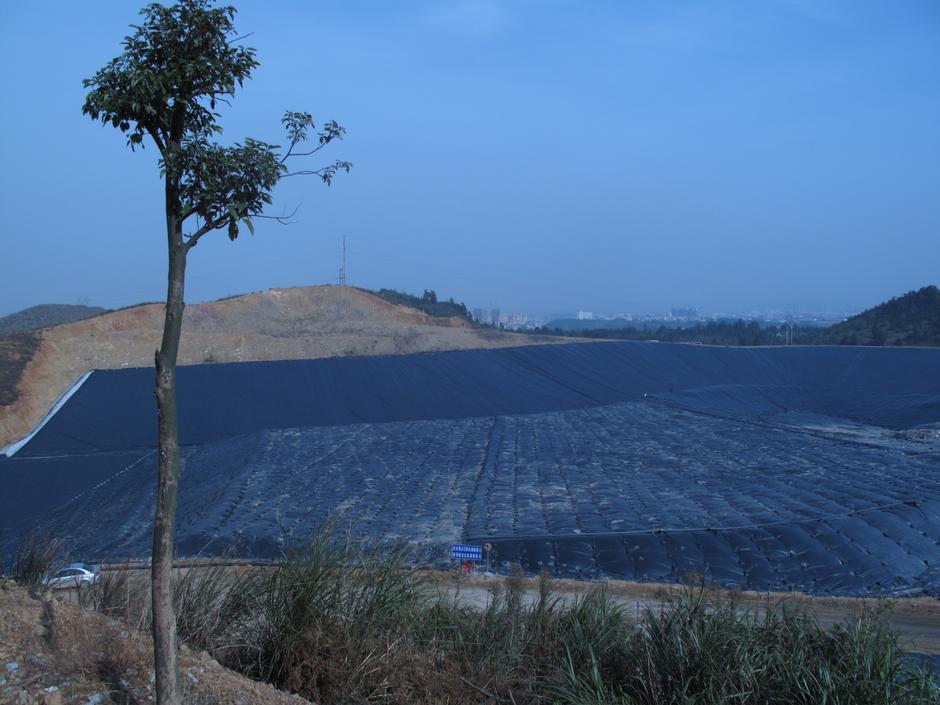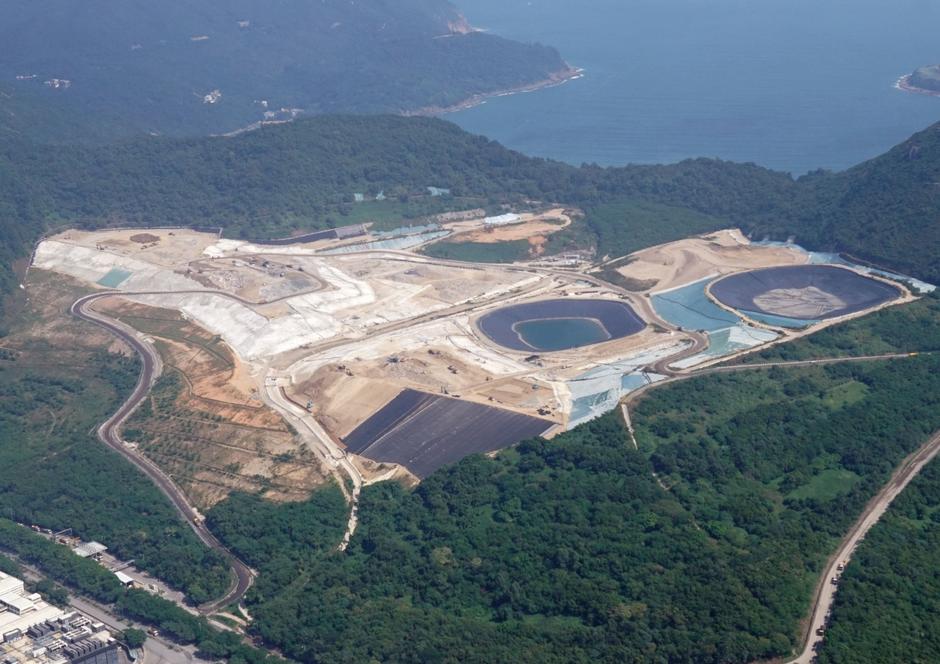Shanghai Laogang Landfill Phase IV

Shanghai Laogang Landfill Phase IV is located in Laogang, Pudong New Area of Shanghai on reclaimed land extending into the East China Sea. It is 4.2 km in length with a width of 800 meters - a total area of 361 hectares. The overall capacity of the landfill is 80 million cubic meters with an expected life of 45 years. The Laogang Landfill Phase IV is the largest landfill in China in terms of capacity and daily intake. It accepts and treats municipal solid waste, and may accept residues from incineration plants and integrated waste treatment plants from downtown Shanghai and surrounding districts.
Laogang Landfill Phase IV is a key project of Shanghai's Municipal Solid Waste Disposal Program and one of Shanghai's urban environmental projects supported by the World Bank.
Veolia was awarded the project though international tender and has created the joint-venture company "Shanghai Laogang Municipal Solid Waste Treatment Co., Ltd.". The Company is responsible for the investment, design, construction, operation and maintenance of the landfill for 20 years according to a Concession Agreement with the Shanghai City Appearance and Environmental Sanitation Administrative Bureau.
Foshan Gaoming Municipal Waste Sanitary landfill

The Foshan Gaoming Municipal Waste Sanitary Landfill is a key project of the province of Guangdong and the city of Foshan in 2003. It is the first cross district large scale municipal solid waste sanitary landfill in Foshan City, handling waste generated in five districts including Chancheng, Gaoming, Nanhai, Sanshui and Shunde.
Through a BOT module, Veolia signed a 30-year Concession Agreement with the municipal government to operate the landfill, landfill gas-to-energy and supply electricity to the local users. This facility is a world-class landfill and the education base of environmental protection in Foshan City.
Veolia has adopted modern landfill mechanical equipment and operation methods to guarantee a compaction ratio of 1.2 t/m3 (national standard is 0.9t/ m3), thus saving landfill space. High efficiency in the separation of rain and leachate to control leachate generation is also achieved.
Jiujiang Shahe Municipal Solid Waste Sanitary Landfill

In August 2007, the Jiujiang Government granted Veolia the concession to design, invest, build, operate and transfer the Jiujiang Municipal Solid Waste Sanitary Landfill. The average treatment capacity of the landfill is 800 metric tonnes per day, with initial intake of 600 metric tonnes per day, and final intake of 1,457 tonnes per day.
Veolia has developed an anaerobic sanitary landfill which is equipped with complete liner system, leachate treatment system, and leachate-gas-drainage system; high sanitary standards; simple and convenient landfill operation; “secondary pollution” prevention.
Veolia has also installed a complete environmental monitoring system: in the landfill, several groundwater monitoring wells with different function have been laid to pay close attention to the landfill operation; the multi-function laboratory equipped with professional analysts has been established as well to carefully analyze the tail water from LTP, the groundwater, the landfill gas, and the concentration of methane around the work surface, and to provide all kinds of valid data to landfill operation.
South East New Territories Landfill

The South East New Territories Landfill (SENT landfill) is one of the three strategic landfills that serve as the major disposal method for municipal solid waste generated in Hong Kong. Among the three strategic landfills, the SENT landfill is the second largest in terms of geographical area.
A subsidiary of Veolia, Green Valley Landfill Limited was contracted in 1993 for the design, build, operation of the SENT landfill and 30 years' aftercare for the Environmental Protection Department of Hong Kong Government until its closure.
State-of-the-art landfill design, construction and management techniques are deployed to ensure the landfill is operated with the highest environmental standards:
- Landfill liner system
- Leachate management system
- Landfill gas management system
- Surface water / ground water management system
- Environmental monitoring system
- Posi-shell application
- Vehicle washing facility

